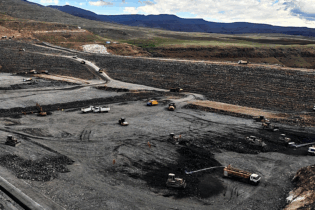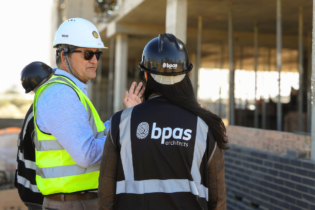A pioneering development in Windsor East north of Johannesburg is offering affordable housing with a difference in the form of ‘container living’.
The development initially caused a stir in the Windsor East suburb when steel shipping containers were off-loaded in mid-April 2012. Some members of the local residents’ association strongly objected saying the development would impact property prices in a precinct which is battling to re-invent itself. That was before they saw the envisaged end product which, in this journalist’s view, could hold its own in any affordable housing project. Estate agent Johan van Rooyen of Remax properties, which operates in Windsor East, is sceptical that it will impact current residential prices.
“The design is brilliant. It will add a different ambience to Windsor.” Van Rooyen is under no illusion that there will initially be some resistance to the concept, but believes the alternative design will add some appeal.
Ettie Brummer of Property.co.za, an owner of several properties in Windsor and an estate agent, is also of the view that it will add value to the once trendy suburb which catered mainly for white professionals in the eighties and nineties.
The area is currently plagued by overcrowding due to poor management and control of units and buildings. It is also one of Gauteng’s renowned drug hotspots – something which police and residents are constantly trying to eradicate.
The target market is those who earn less than the requisite between R5 000 to R15 000 a month to qualify for subsidised housing or a bond in terms of the banks’ criteria. “Our target market is people (in the GAP market) who are looking for decent homes but can’t afford to buy yet, but do have disposable income to be able to rent and do want a decent place to live in,” says CEO of Jika Properties and Citiq, Paul Lapham.
Several developers are exploring this alternative in terms of providing affordable entry-level homes, catering specifically for the plethora of potential buyers out there.
However, the Windsor East units are not for sale. Lapham concedes the building is unconventional, adding that the public is likely to be more open to committing to a rental agreement in this instance to buying. He says that obtaining finance for a development of this nature could also be problematic: “South African banks are notoriously conservative in terms of giving people bonds. Somebody arriving and saying I want a bond for my container might receive short shrift.”
RDP housing in South Africa is notorious for being tiny, sloppily built and lacking in quality finishes. Vast numbers of houses across the country are standing empty or have been vandalised and destroyed as unscrupulous owners rent them out for an additional income.
That was before they saw the envisaged end product which, in this journalist’s view, could hold its own in any affordable housing project. Estate agent Johan van Rooyen of Remax properties, which operates in Windsor East, is sceptical that it will impact current residential prices.
“The design is brilliant. It will add a different ambience to Windsor.” Van Rooyen is under no illusion that there will initially be some resistance to the concept, but believes the alternative design will add some appeal.
Ettie Brummer of Property.co.za, an owner of several properties in Windsor and an estate agent, is also of the view that it will add value to the once trendy suburb which catered mainly for white professionals in the eighties and nineties.
The area is currently plagued by overcrowding due to poor management and control of units and buildings. It is also one of Gauteng’s renowned drug hotspots – something which police and residents are constantly trying to eradicate.
The target market is those who earn less than the requisite between R5 000 to R15 000 a month to qualify for subsidised housing or a bond in terms of the banks’ criteria. “Our target market is people (in the GAP market) who are looking for decent homes but can’t afford to buy yet, but do have disposable income to be able to rent and do want a decent place to live in,” says CEO of Jika Properties and Citiq, Paul Lapham.
Several developers are exploring this alternative in terms of providing affordable entry-level homes, catering specifically for the plethora of potential buyers out there.
However, the Windsor East units are not for sale. Lapham concedes the building is unconventional, adding that the public is likely to be more open to committing to a rental agreement in this instance to buying. He says that obtaining finance for a development of this nature could also be problematic: “South African banks are notoriously conservative in terms of giving people bonds. Somebody arriving and saying I want a bond for my container might receive short shrift.”
RDP housing in South Africa is notorious for being tiny, sloppily built and lacking in quality finishes. Vast numbers of houses across the country are standing empty or have been vandalised and destroyed as unscrupulous owners rent them out for an additional income.The units in Windsor East comprise two and three-bedroomed structures at 48m² and 56m² respectively. “All the apartments will have balconies. Each apartment consists basically of two containers – each 2.4m wide, so a living space of 4.8m. As you can imagine in a normal apartment, that’s a really decent width for a lounge and TV room.”
The three beds have one-and-a-half bathrooms with the two beds equipped with one full bathroom. The former will set you back between R3 600 and R3 800 a month while the latter will cost between R4 400 and R4 600. “We think the end product will compete right up there with the conventional bricks and mortar. We’re not looking at making these discount rental units, they will be standard rental prices,” Lapham says. He adds that while a minority of residents initially opposed the development, the authorities were more open to giving it the green light, provided all the regulations had been adhered to. “Our main objective here is to provide decent homes to people at an affordable rent that give us a decent return on investment.” “The use of containers is environmentally friendly, we’re recycling them. Containers have wonderful insulation characteristics, they’re very strong, they’re very durable, and everything we’re doing over and above the containers, the insulation, using polystyrene which is used in fridges, abattoirs and so on, is environmentally friendly and energy efficient,” Lapham says. In a previous Moneyweb article on alternative building materials, concerns were raised about standards, particularly with regards to fire hazards. Lapham has dispelled these fears: “Everything we’ve done here has been signed off and approved as having the required fire ratings. We’re not allowed to build without that engineer’s report. “The combination of polystyrene, the steel and the plaster work that we put in this building are well inside the building standards we’re required to have.” Lapham says it took a mere three days after the foundation was laid to assemble the three-storey structure in mid-April and the expected completion date is earmarked for mid-June. Tenants should be able to take occupation on August 1 if all goes according to plan. Lapham says this is a first for South Africa in terms of providing permanent, affordable housing. Source: moneyweb.co.za






